In its transversal direction, the Mercatorum Way crosses the Val Serina valley, moving towards the Val Brembana valley on the raised plateau of Dossena, on the north side of Monte Castello. The end of the route is on the Crocetta Pass, a historic point of passage not only for the Mercatorum Way but also for many other transhumance routes heading for Oltre il Colle. The village of Dossena, benefiting from slopes well positioned in relation to the sun, has dispersed over the years to form a series of small and attractive groups of buildings, now part of a modern but still low-density urbanised area. The ancient road, unlike the “high-altitude” route that exists today, ran past the San Giovanni Battista (Saint John the Baptist) parish church buildings, and then continued, as it does today, towards Villa – the oldest inhabited settlement – and on to Pignolino and Bosco in Fuori. Some branches leaving the path, even though included in the current project for promoting the Mercatorum Way, reached the Brembano valley floor via San Gallo. It is worth noting that for much of the route, hikers are walking at above 1,000 metres altitude.
Tracciato Storico
Itinerario escursionistico
Difficoltà: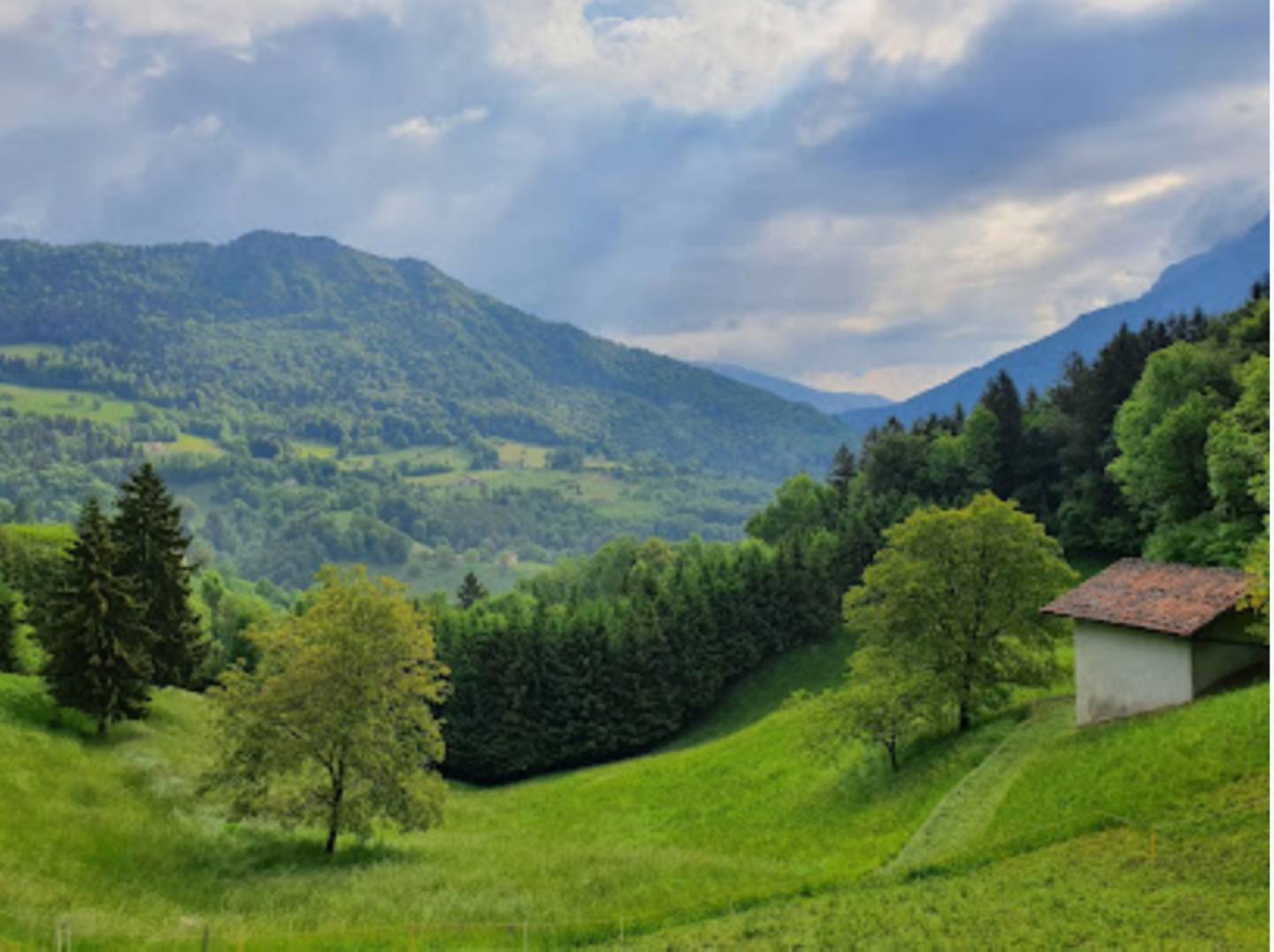
Passage across the pass joining the drainage basins of the rivers Serina and Asnera, running into the main valley of the river Brembo, at an altitude of 1,051 metres. A pass used in the past both for the Mercatorum Way and for transhumance passages to and from Oltre il Colle and the upper Val Parina valley. Today it is reached by the SP 26 road.
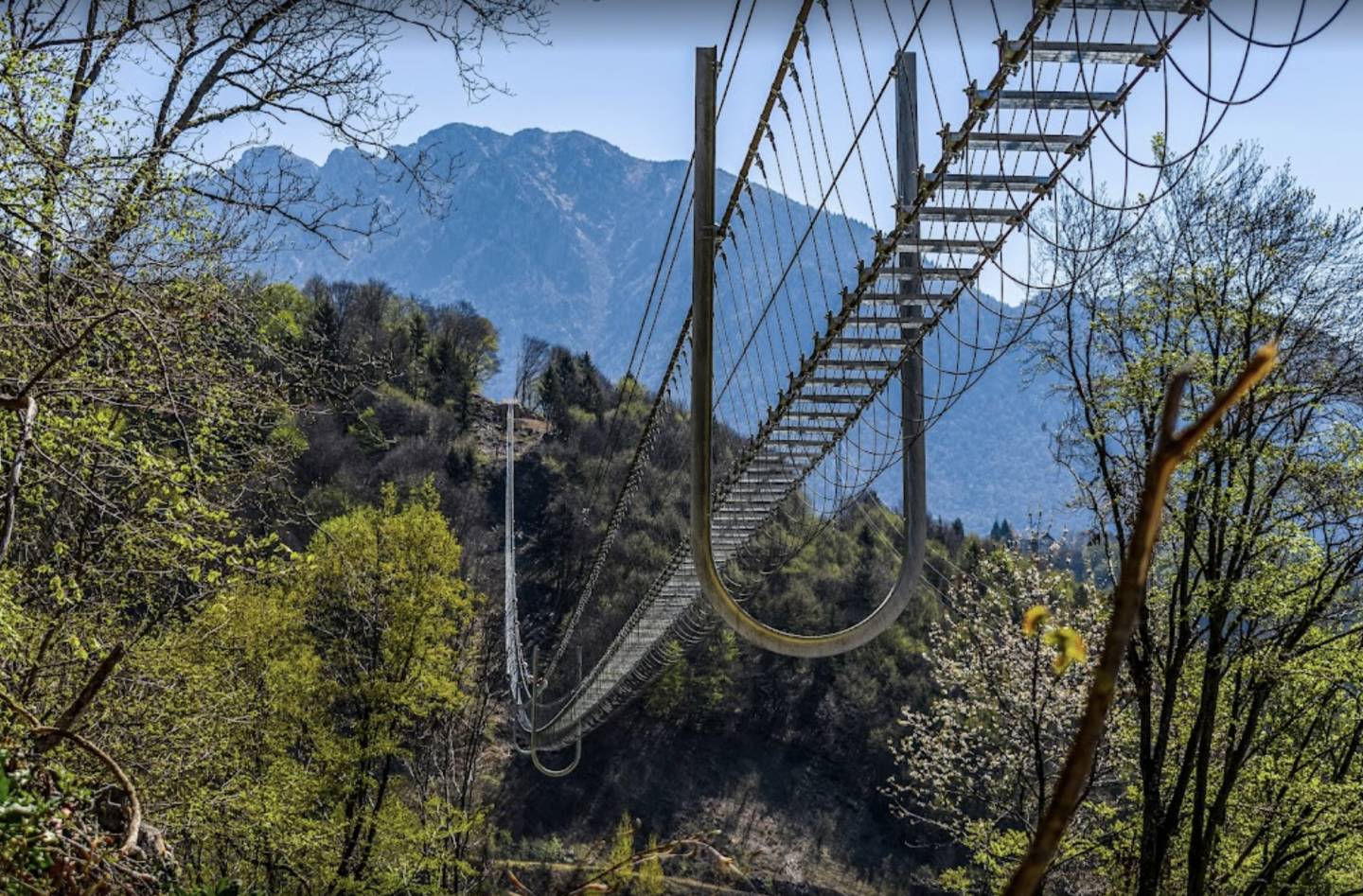
A suspended footbridge over the river Asnera valley, it connects the former shooting area Roccolo Corna Bianca with Dossena. Hikers can cross it, using safety equipment, walking along 1,200 separate steps for a length of 505 metres at a height of 120 metres from the ground. This infrastructure, of recent construction, comprises seven steel cables (two supporting the steps over the void, two for the handrails and three as safety cables). A toll has to be paid.
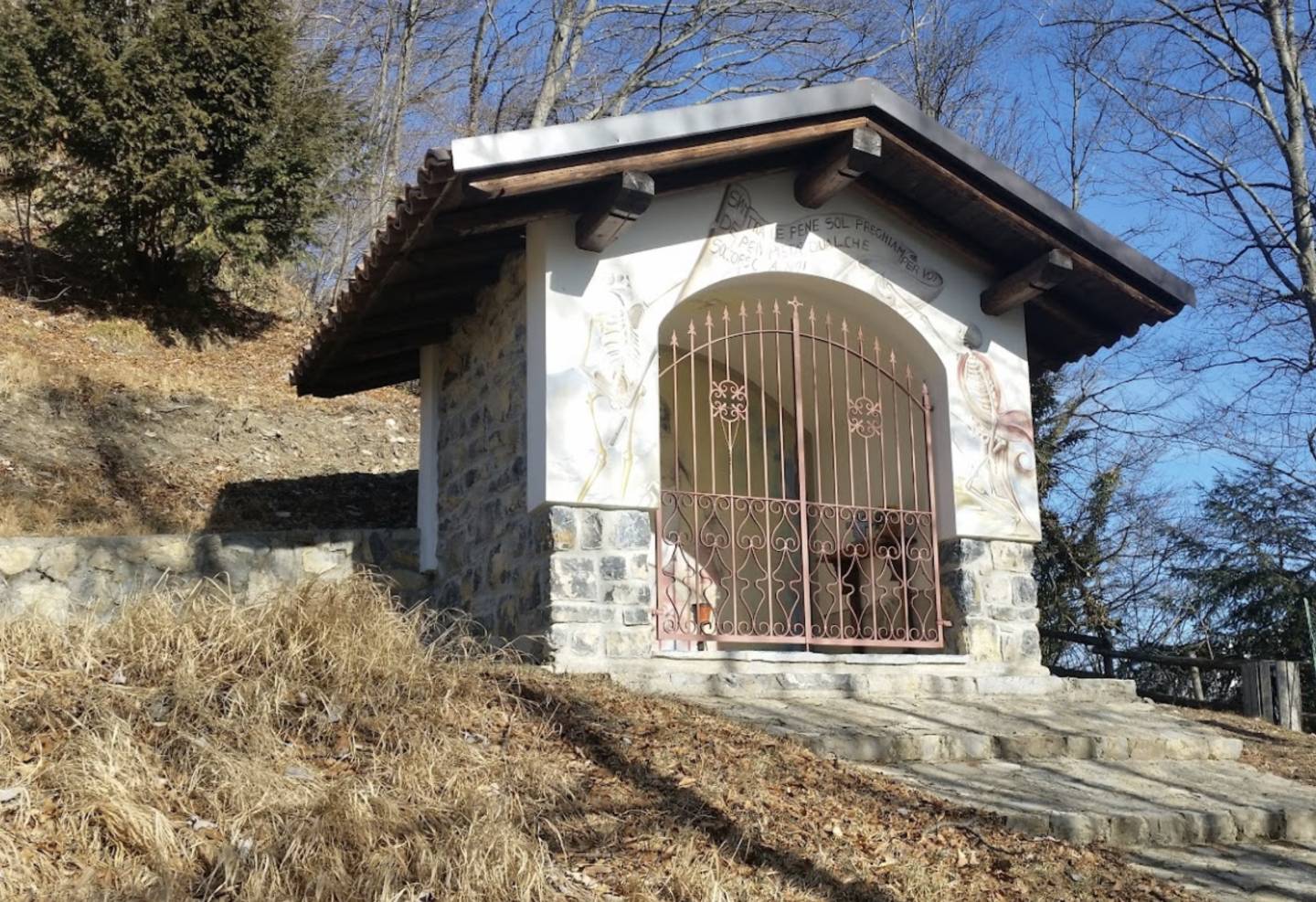
A shrine that is named after its location because, as a result of its position looking over the valley, when a horn was blown, it could be heard in every part of Dossena. The Tribulina shrine has recently been restored and it is one of the numerous votive shrines that can be found along the ancient Mercatorum Way. The shrines were points of reference and a source of reassurance for travellers on the Mercatorum Way, who had to face long, tiring and dangerous journeys, and often fell victim to brigands. This shrine has a gabled structure: on the façade is “The Triumph of Death,” with inside, “Christ Triumphing over Death.”
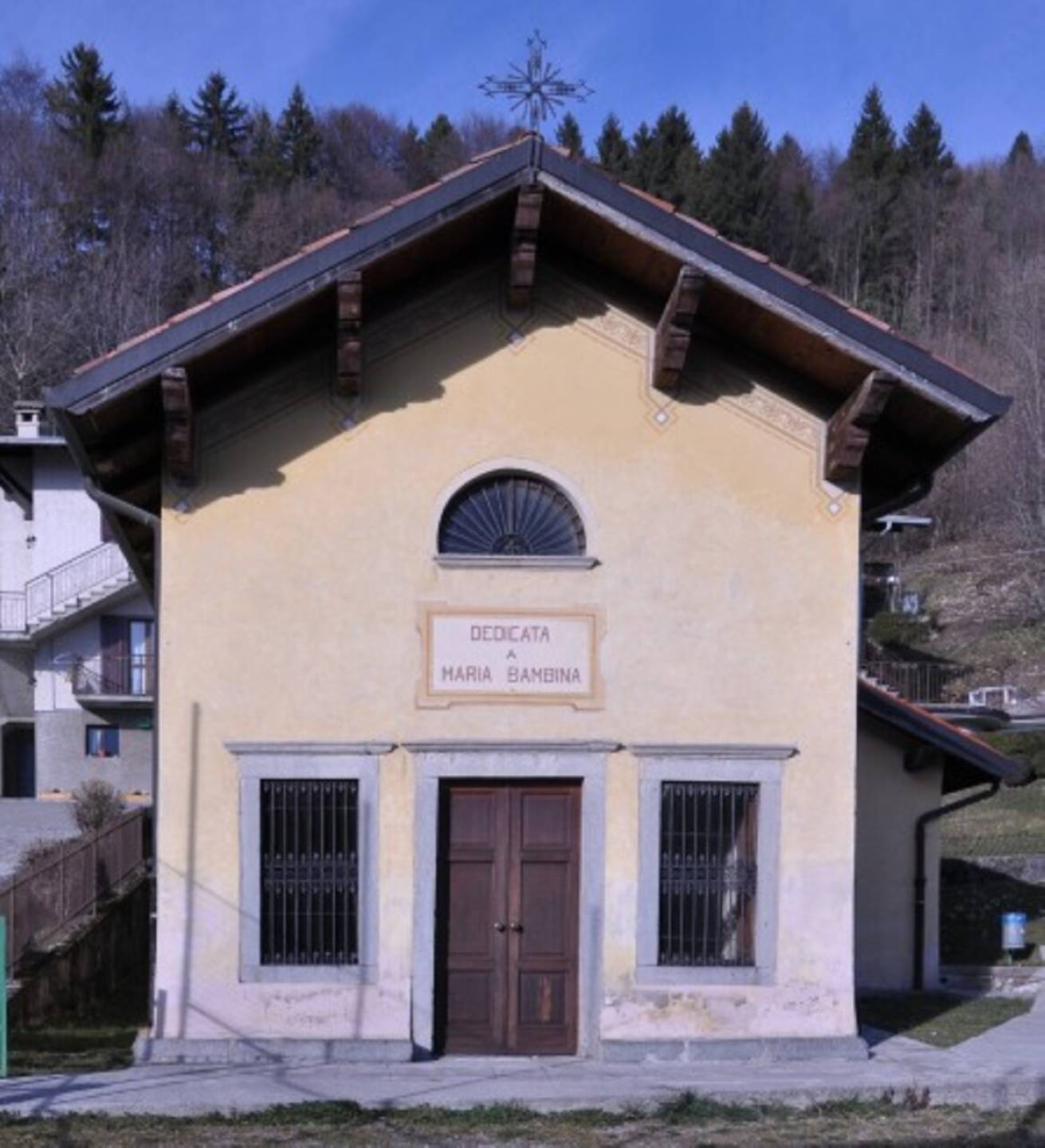
A small church located near the sports field, in Via Villa. It has a simple single-nave structure. The façade has a lunette, a portal and two symmetrical windows with stone surrounds.
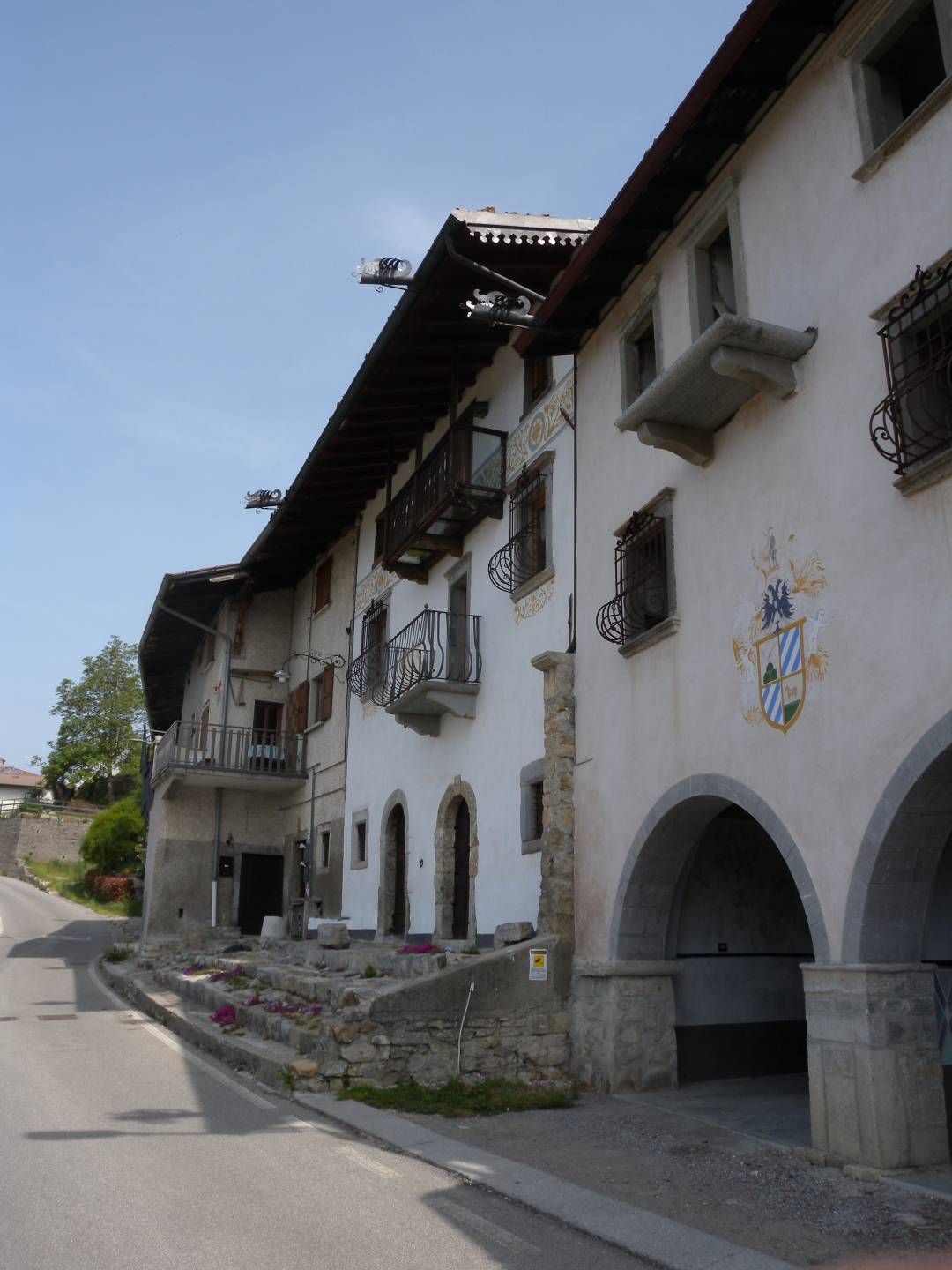
Dossena (the name comes from Dorsum, the ridge on which the settlement grew) has 974 inhabitants. The first settlements apparently date back to the discovery of calamine and galena, which were consequently mined. For this reason, Dossena is considered the first permanent settlement in the Brembana Valley. Mining activities made the village an important centre as early as Etruscan times, and this led to the development of a network of roads and mule tracks for communications, first and foremost the old Mercatorum Way. The ancient fluorite mines have also been restored and they are now accessible by means of guided tours. Dossena was the location of the first archpriestly church in the Brembana Valley. There has been a suggestion that Leonardo da Vinci visited Dossena, in order to survey the mines and improve their yield. The Mascherada de Dosséna (Masked festival of Dossena) is a celebration held at carnival time, marking the end of winter, a cold season that is not favourable for farming.
The signposted route of the Mercatorum Way runs above the old town, along the road to the Villa district, along which stand a number of ancient dwellings, now restored, with ornate stone portals and noble coats of arms on the plasterwork.
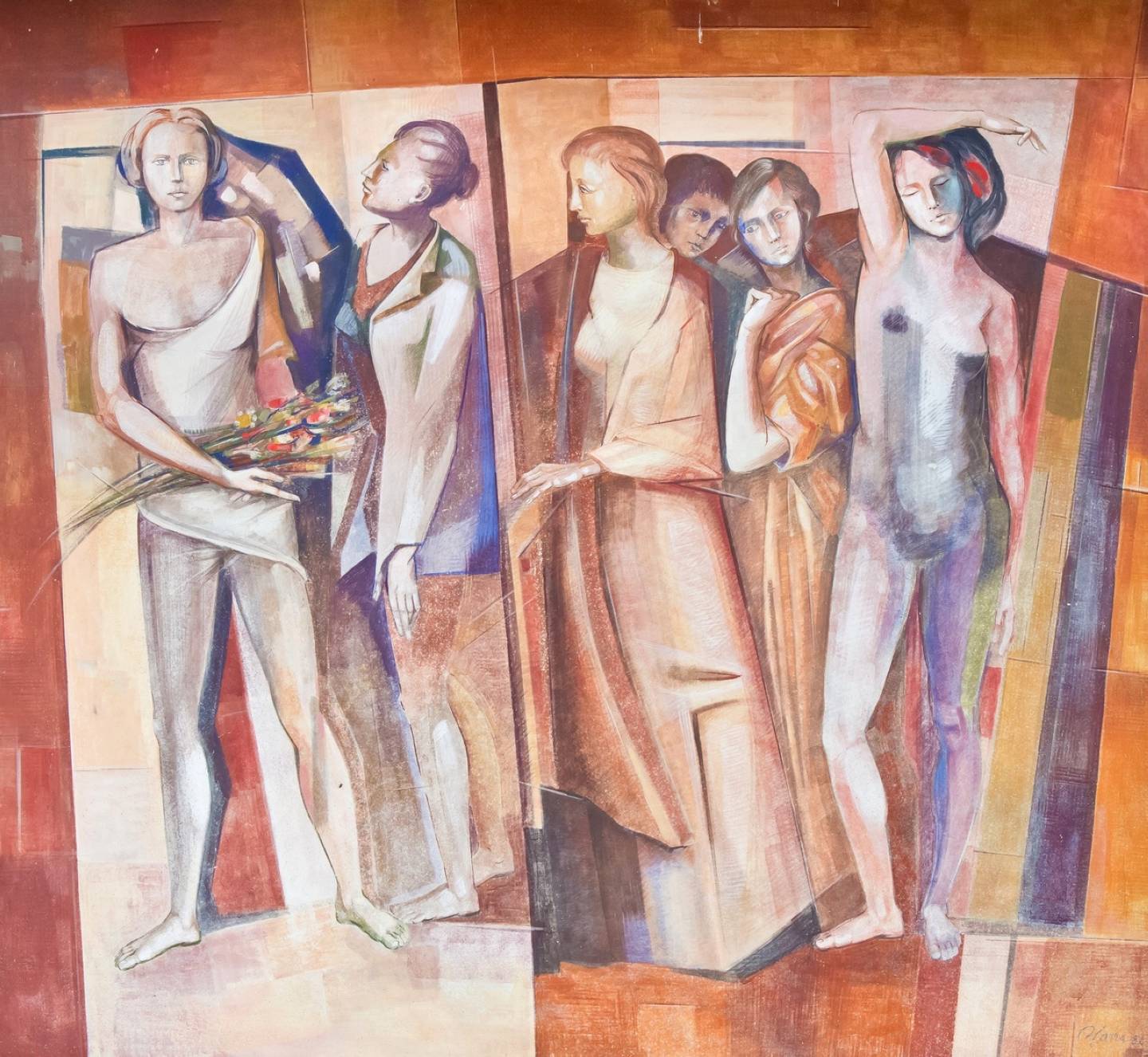
The Dossena Murals project, in the heart of the Brembana Valley, began in the first half of the 1980s, promoted by the municipal administration and fine-tuned by councillor Filippo Alcaini. Thirty Bergamo artists worked as part of the project, offering their skills to the community of Dossena. The 30 murals were made in three successive phases, in 1981, 1982 and 1984, with help from the population, and above all from the owners of the buildings. Ideally linked to the frescoes of the past, the exterior walls of several houses were decorated with a series of paintings, depicting moments of village life. Thanks to this initiative, the centre of the village is adorned with images illustrating local culture, work, the environment and traditions of the area, perpetuating intimate and engaging aspects of a world that risks disappearing.
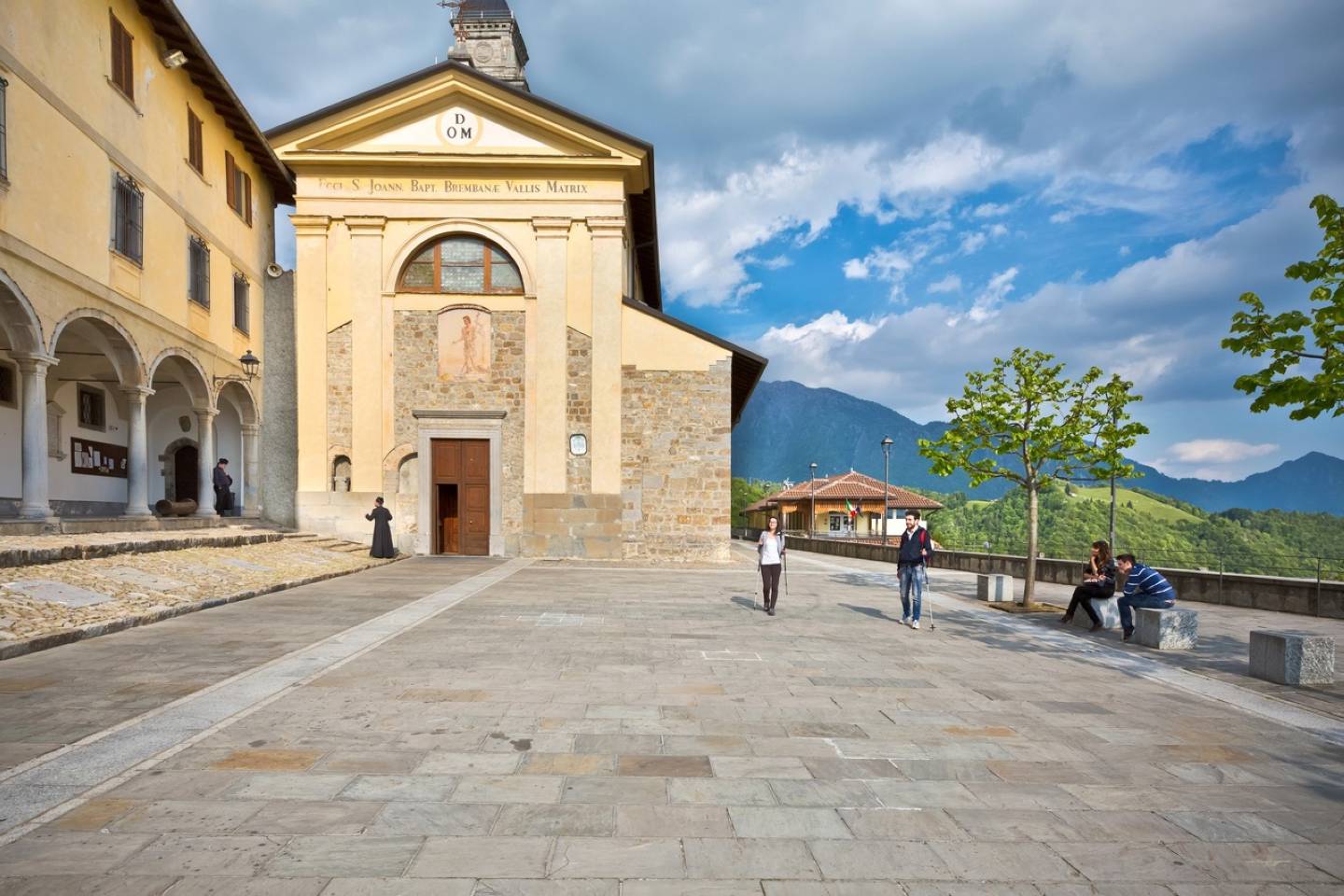
Dossena is one of the oldest settlements in the Brembana Valley, and likewise its church, which was the first baptismal church in the area and took the role of Parish Church as far back as the early Middle Ages. All that remains of the original building are the foundations under the floor of the present construction, since, given its importance to community life over the centuries, it has undergone constant modifications in successive epochs in order to bring it into line with the various architectural styles over the course of time. Looking at its façade, it is possible to see Romanesque elements of the church dating back to the year 1000 retained within the main 16th-17th century front, along with various additions made first in the 1700s and then in the 1800s. Different styles blend harmoniously and reveal the precious treasures inside: works of art from Venice or from other parts of Italy and Europe, donated by illustrious fellow citizens who had emigrated in search of fortune. These pieces include the Beheading of Saint John the Baptist by Veronese, the Baptism of Jesus by Francesco Rizzo da Santacroce, a cycle dedicated to the Passion of Christ by Ridolfi and the various Saints painted by Carlo Ceresa; Saint Ursula, attributed to Pauwels Frank or the Madonna de los Remedios from Seville, and others. An unusual feature can be seen on one side of the square in front of the church, the so-called Portico dei Morti (Portico of the Dead, so-called because it stands on the site of the old cemetery), an elegant 17th-century porticoed construction.
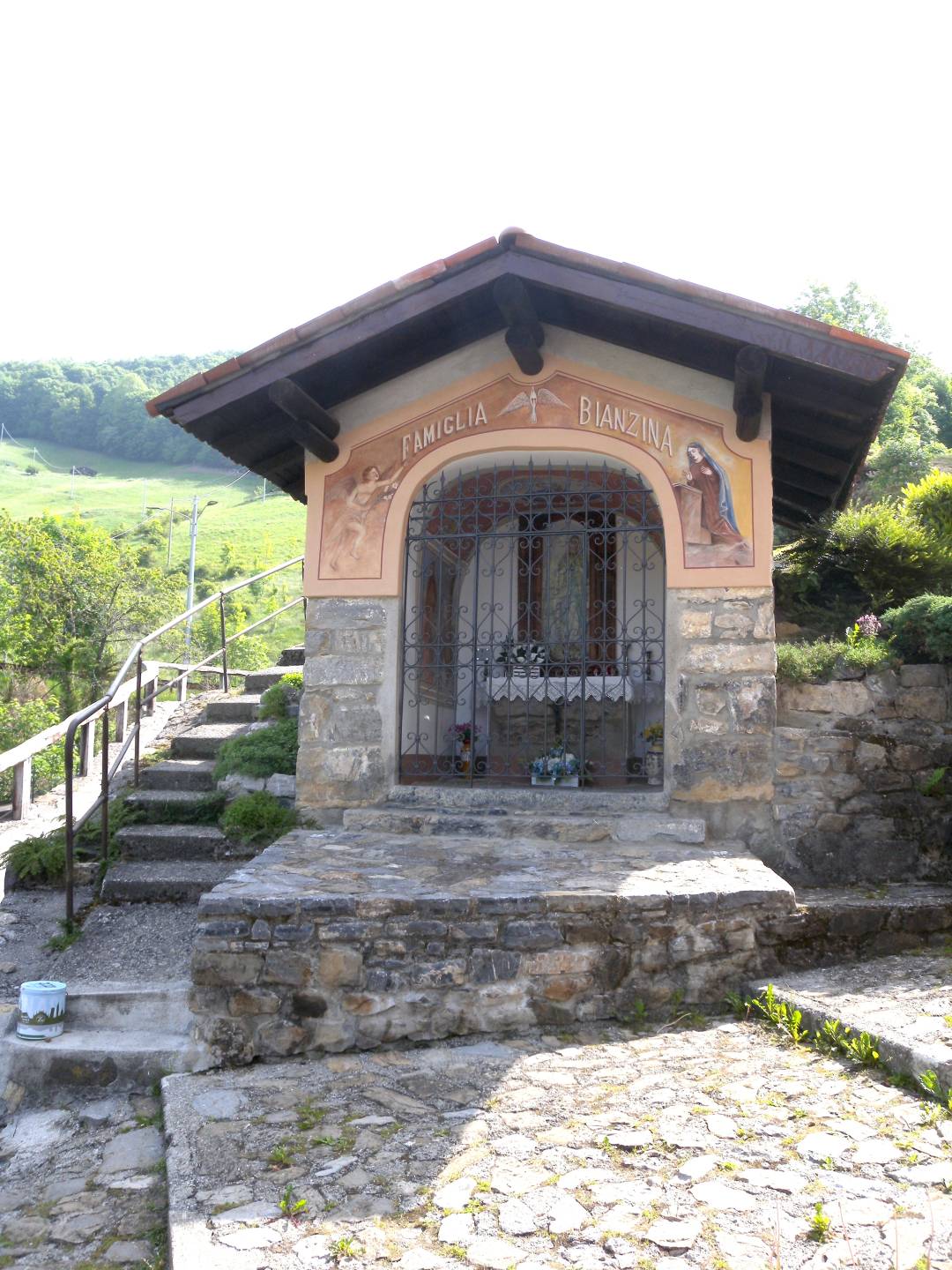
Dossena can boast an important mining tradition. During the Ancient Roman civilisation, Dossena was an important mining centre for the empire. Within the ancient mines, the heavy punishment for slaves of Rome took the form of condemnation “Ad Metalla” (to the mines). It is perhaps for this reason that the first church in the Brembana Valley was founded in this small mountain village. Generations of inhabitants worked in the mines of the village, extracting calamine. The Pagliaro mines were rich in fluorite, a rather unusual mineral that melts (becoming liquid and flowing rapidly) at very low temperatures. An incredible system of tunnels was created, using just the strength of arms and pickaxes, and it represents a rare example of dedication and sacrifice. In the 1920s (at the peak of mining activities) there were around 1,200 inhabitants in Dossena and almost all of them worked in the mines. The mines were active for centuries, until they closed definitively in the second half of the 20th century. 34 years after work ended, Dossena’s ancient mines have at last been reopened to the public, after a long period of restoration and work designed to ensure visitor safety, made possible by the cooperation of many volunteers. The only plausible reference to the mining activities in Dossena in Ancient Roman times is a text by Pliny the Elder, which reads as follows: “Vena quo dictum est modo foditur ignique perficitur. Fit et e lapide aeroso, quem vocant cadmean, celebri trans maria et quondam in Campania, nunc et in Bergomatium agro extrema parte Italiae.” (Naturalis Historia, XXXIV, 2).
The text can be translated as follows: “the vein of metal is mined in this way and purified with fire. It is also produced from a mineral containing copper, called cadmia, known in the lands beyond the Mediterranean Sea and once in Campania, now also in the territory of the Bergamo peoples, right at the edge of Italy.” Pliny, who was born in Como, may have acquired the information about the presence of mines in the Bergamo area in person or through direct witnesses.
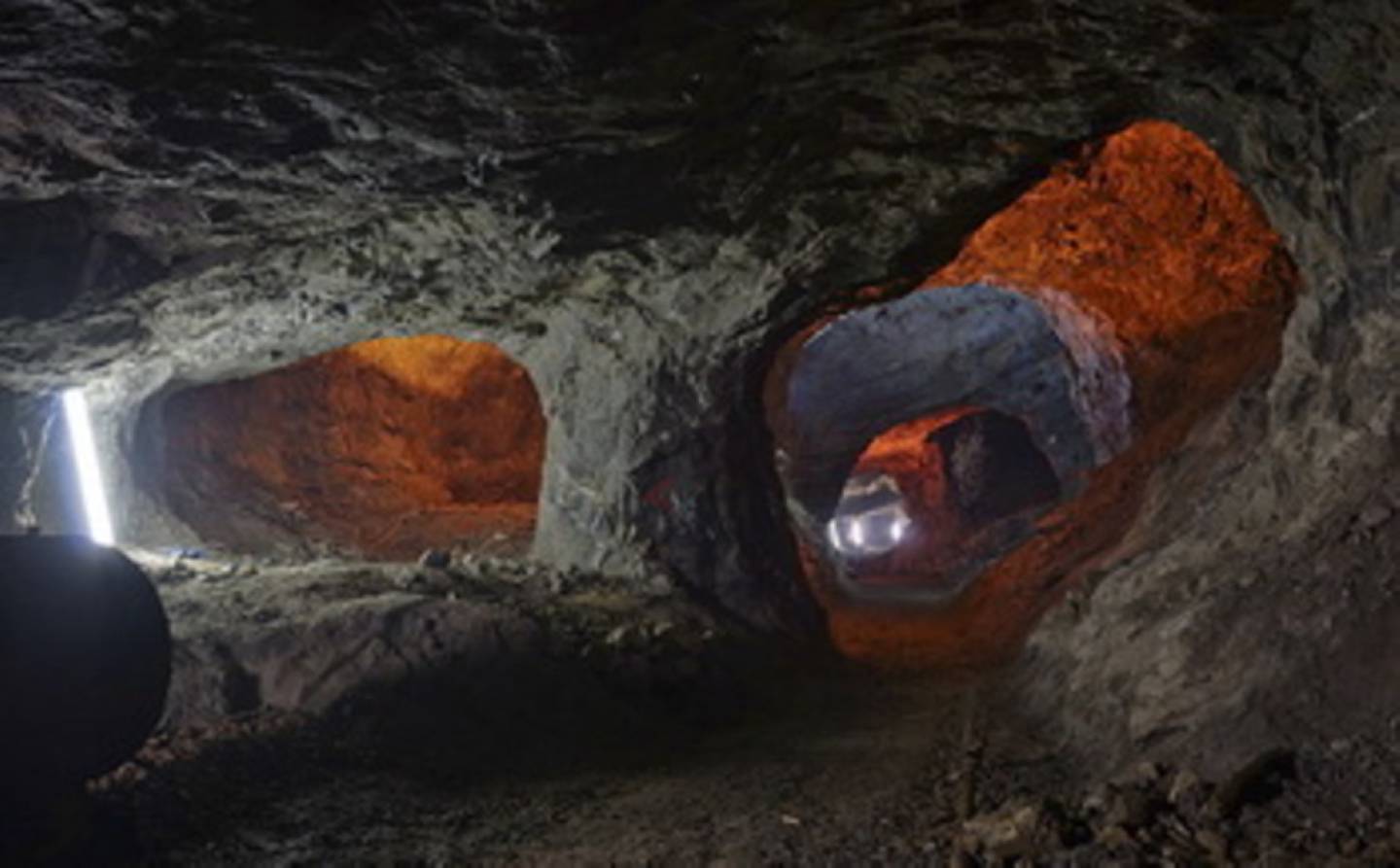
Dossena can boast an important mining tradition. During the Ancient Roman civilisation, Dossena was an important mining centre for the empire. Within the ancient mines, the heavy punishment for slaves of Rome took the form of condemnation “Ad Metalla” (to the mines). It is perhaps for this reason that the first church in the Brembana Valley was founded in this small mountain village. Generations of inhabitants worked in the mines of the village, extracting calamine. The Pagliaro mines were rich in fluorite, a rather unusual mineral that melts (becoming liquid and flowing rapidly) at very low temperatures. An incredible system of tunnels was created, using just the strength of arms and pickaxes, and it represents a rare example of dedication and sacrifice. In the 1920s (at the peak of mining activities) there were around 1,200 inhabitants in Dossena and almost all of them worked in the mines. The mines were active for centuries, until they closed definitively in the second half of the 20th century. 34 years after work ended, Dossena’s ancient mines have at last been reopened to the public, after a long period of restoration and work designed to ensure visitor safety, made possible by the cooperation of many volunteers. The only plausible reference to the mining activities in Dossena in Ancient Roman times is a text by Pliny the Elder, which reads as follows: “Vena quo dictum est modo foditur ignique perficitur. Fit et e lapide aeroso, quem vocant cadmean, celebri trans maria et quondam in Campania, nunc et in Bergomatium agro extrema parte Italiae.” (Naturalis Historia, XXXIV, 2).
The text can be translated as follows: “the vein of metal is mined in this way and purified with fire. It is also produced from a mineral containing copper, called cadmia, known in the lands beyond the Mediterranean Sea and once in Campania, now also in the territory of the Bergamo peoples, right at the edge of Italy.” Pliny, who was born in Como, may have acquired the information about the presence of mines in the Bergamo area in person or through direct witnesses.